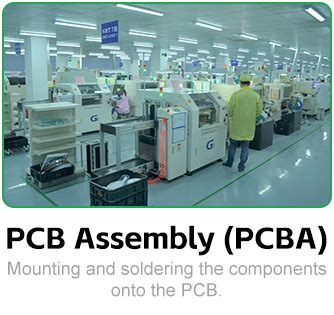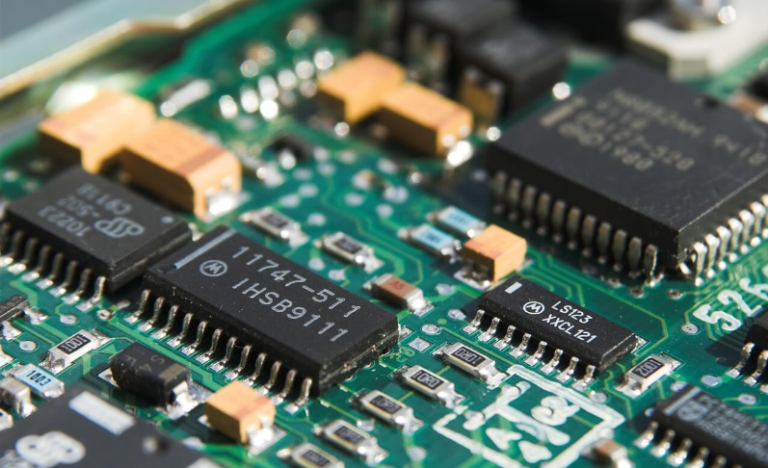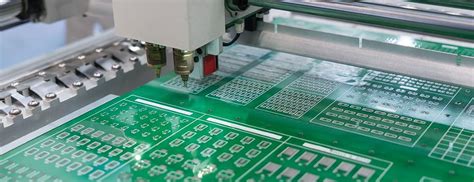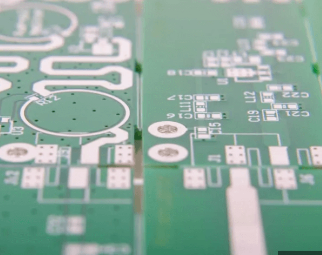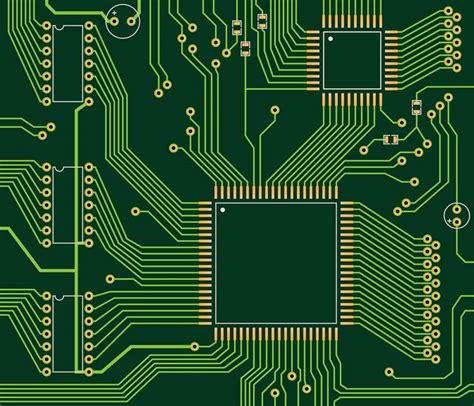PCB Assembly Cost Breakdown: Key Drivers and Savings Strategies
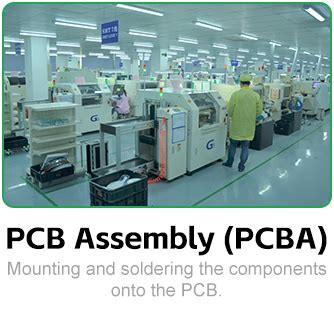
Key Takeaways
Understanding the PCB assembly cost structure begins with recognizing its core drivers. Component selection remains one of the most impactful factors, as specialized or high-frequency parts often escalate expenses. For instance, opting for surface-mount technology (SMT) over through-hole components can reduce labor costs but may require pricier machinery.
Tip: Always cross-reference component availability and lead times during design to avoid last-minute substitutions that inflate budgets.
Labor expenses vary significantly by region, with automation playing a dual role: while initial setup costs are high, it reduces long-term manual intervention. Below is a breakdown of cost allocation in PCBA:
| Cost Factor | Typical Allocation (%) | Optimization Strategy |
|---|---|---|
| Component Sourcing | 40-60 | Supplier negotiation & bulk buys |
| Design Complexity | 15-25 | Design for Manufacturability (DFM) |
| Technology Level | 10-20 | Hybrid automation integration |
| Order Volume | 5-15 | Economies of scale |
Balancing quality standards with budget requires strategic choices, such as prioritizing critical tolerances while standardizing non-essential features. Future trends, including AI-driven defect detection, promise to trim rework costs but demand upfront investments.
Transitioning smoothly between these elements ensures cohesive cost management without compromising reliability in PCB assembly workflows.

PCB Assembly Cost Drivers Explained
The total expense of PCB assembly hinges on multiple interdependent factors, each contributing uniquely to the final price. At its core, component procurement stands as a primary driver—high-performance ICs, specialized connectors, or rare semiconductors often command premium prices, particularly when sourced from certified suppliers. Equally impactful is the complexity of the board design; multilayered layouts with high-density interconnects (HDI) require advanced equipment and extended processing times, elevating PCBA costs.
Labor expenses also play a pivotal role, especially in regions with higher wage standards. While automation reduces manual intervention, tasks like prototype validation or rework still demand skilled technicians, adding to operational overhead. Additionally, technology choices—such as opting for surface-mount technology (SMT) over through-hole assembly—affect both setup fees and production efficiency. Transitioning to automated systems may lower per-unit costs in high-volume orders but necessitates upfront investments in machinery and software.
Finally, regulatory compliance and testing protocols—such as IPC-A-610 standards or functional testing—introduce non-negotiable costs to ensure reliability. Balancing these variables requires a strategic approach to avoid compromising quality while managing budgetary constraints.
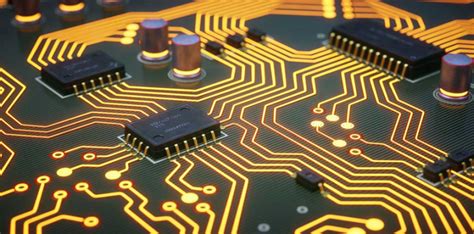
Component Selection Impact on Pricing
Component choices directly influence PCB assembly costs, often accounting for 40–60% of total project expenses. High-performance parts like advanced microcontrollers, specialized sensors, or military-grade capacitors can escalate prices significantly compared to standard commercial-grade alternatives. Engineers must balance performance requirements with budget constraints—opting for surface-mount devices (SMDs) over through-hole components, for instance, reduces manual labor in PCBA but may require pricier automated equipment.
Material quality also plays a role: industrial-grade substrates or lead-free finishes increase durability but add 15–25% to material costs. Additionally, component availability affects timelines and pricing—obsolete or scarce parts often lead to delays or substitutions that inflate expenses. Strategic sourcing practices, such as prioritizing multi-sourced components or leveraging certified distributors, mitigate these risks.
For cost-sensitive projects, designers should evaluate lifecycle costs, including potential obsolescence and replacement expenses. Standardizing components across multiple designs can unlock volume discounts and streamline inventory management. By aligning part selection with both technical specifications and supply chain realities, manufacturers optimize PCB assembly costs without compromising reliability or compliance.

Labor and Technology Cost Analysis
Labor expenses and technological investments form two pillars of PCB assembly expenses, directly influencing overall PCBA budgets. While skilled labor remains critical for tasks like manual soldering or quality inspections, regions with higher wage standards often see elevated production costs—prompting manufacturers to balance between cost-effective locations and technical expertise. Automation technologies, such as surface-mount technology (SMT) lines or automated optical inspection (AOI) systems, reduce dependency on manual labor but require significant upfront capital. For instance, deploying robotic pick-and-place machines can accelerate assembly speeds by 40-60%, yet the ROI period depends on production volume scalability.
Additionally, advanced PCB assembly processes—like laser drilling or high-density interconnect (HDI) designs—demand specialized machinery, raising per-unit costs for low-volume orders. However, integrating Enterprise Resource Planning (ERP) software streamlines workflow monitoring, minimizing downtime and material waste. To optimize costs, manufacturers often adopt hybrid models: combining automation for repetitive tasks with human oversight for complex assemblies. This approach ensures precision while curbing labor overheads, proving vital for maintaining competitiveness in high-mix, low-volume production environments. Transitioning to such strategies aligns with broader industry shifts toward smart manufacturing, where technology investments gradually offset long-term operational expenditures.

Design Optimization for Cost Reduction
Strategic design choices significantly influence PCB assembly expenses, making early-stage optimization critical. A primary focus should be streamlining component placement to minimize PCBA complexity. For instance, reducing the number of unique components lowers procurement challenges and cuts setup time. Standardized footprints and surface-mount technology (SMT) adoption further simplify manufacturing, as they align with automated processes, reducing manual labor requirements.
Material selection also plays a pivotal role. Opting for standard substrate materials like FR-4 instead of high-frequency alternatives can lower costs without compromising functionality for most applications. Additionally, consolidating layers in multilayer boards—while balancing performance needs—reduces raw material usage and fabrication time.
Design-for-manufacturing (DFM) principles ensure compatibility with assembly workflows, avoiding rework delays. For example, maintaining adequate spacing between components prevents soldering defects, while avoiding overly tight tolerances minimizes tooling adjustments. Collaboration with PCB assembly partners during the design phase helps identify cost traps early, such as non-standard via sizes or unnecessary plating steps.
Finally, panelization—grouping multiple boards into a single array—optimizes material utilization and accelerates throughput. This approach not only trims per-unit costs but also aligns with bulk production efficiencies, creating a ripple effect across the entire PCBA budget.
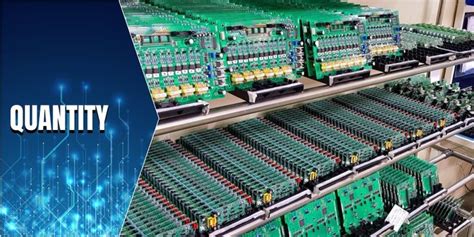
Bulk Purchasing Strategies for Savings
Leveraging bulk purchasing is one of the most effective ways to reduce PCB assembly expenses without compromising quality. Suppliers often offer volume discounts for components ordered in larger quantities, directly lowering the per-unit cost of PCBA. For instance, procuring resistors, capacitors, or integrated circuits in bulk can slash material costs by 15–30%, depending on order size and supplier agreements. However, this approach requires careful planning to avoid overstocking, which risks tying up capital in unused inventory.
To optimize bulk buying, manufacturers should align procurement with demand forecasts and production schedules. Standardizing components across multiple projects—such as using the same microcontroller or connector type—amplifies purchasing power by consolidating orders. Additionally, building long-term partnerships with trusted suppliers can unlock preferential pricing tiers or flexible payment terms.
Automation tools like PCB assembly cost calculators or inventory management software further refine bulk strategies by identifying underutilized components or predicting future needs. While economies of scale drive savings, balancing bulk orders with just-in-time delivery practices ensures efficiency without excess. By integrating these tactics, businesses can transform procurement into a strategic advantage, directly impacting the bottom line of PCBA projects.
Automation in PCB Cost Management
The integration of automation into PCB assembly processes has become a cornerstone for balancing efficiency and cost control. Advanced PCBA production lines now leverage robotic pick-and-place systems, automated optical inspection (AOI), and AI-driven testing protocols to minimize human intervention while maximizing precision. These technologies reduce labor costs—a major expense in traditional assembly—and mitigate errors that lead to rework or scrap. For instance, AOI systems can inspect thousands of solder joints per hour, identifying defects 10x faster than manual checks.
Beyond direct labor savings, automation enhances scalability in high-volume orders. Manufacturers using standardized robotic workflows can ramp up production without proportional increases in staffing, lowering per-unit costs over time. However, implementing automation requires upfront capital investment in equipment and software. To justify this, companies often analyze return on investment (ROI) timelines, factoring in reduced defect rates and faster turnaround times.
Another critical advantage lies in material optimization. Automated systems precisely control solder paste application and component placement, reducing waste of expensive materials like copper substrates or specialty ICs. Additionally, machine learning algorithms in modern PCBA lines enable predictive maintenance, preempting equipment downtime that could disrupt timelines.
While automation drives cost efficiency, its strategic deployment matters. Hybrid models—combining robotic precision with skilled technicians for complex tasks—offer flexibility for low-volume, high-mix projects. This approach ensures manufacturers avoid over-automation, where rigid systems struggle with design variability, ultimately preserving both quality and budget.
Balancing Quality and Budget Control
Achieving equilibrium between PCB assembly quality and cost efficiency requires a strategic approach to value engineering. While opting for lower-grade components or simplified designs might reduce upfront PCBA expenses, it risks increasing long-term costs through higher failure rates or rework. Instead, manufacturers should prioritize critical performance areas—such as high-reliability components for mission-critical circuits—while identifying non-essential sections where cost-saving alternatives (e.g., commercial-grade resistors or standardized connectors) can be safely implemented.
Leveraging design for manufacturability (DFM) principles ensures layouts align with automated assembly processes, minimizing manual intervention and reducing labor costs. For instance, standardizing pad sizes and avoiding overly complex via structures can accelerate production without compromising functionality. Additionally, partnering with suppliers offering volume-tiered pricing or consignment models for high-cost ICs helps stabilize material budgets.
Automated optical inspection (AOI) and in-circuit testing (ICT) systems further balance quality and cost by catching defects early, preventing expensive post-production fixes. However, over-specifying testing protocols for low-complexity boards can inflate PCB assembly expenses unnecessarily. A tiered quality assurance strategy—applying rigorous checks only to high-risk assemblies—optimizes resource allocation. By aligning technical requirements with economic realities, manufacturers maintain reliability while avoiding overspending on non-value-added features.
Future Trends Affecting Assembly Costs
As technology evolves, PCB assembly processes are poised to undergo transformative shifts that will directly influence cost structures. The growing adoption of artificial intelligence (AI) and machine learning in PCBA production lines is expected to streamline quality control, reducing defects and rework expenses. Additionally, advancements in modular design frameworks could lower setup costs by enabling faster reconfiguration of assembly lines for diverse product batches.
Another critical trend is the rising demand for sustainability-driven manufacturing. Stricter environmental regulations may increase material costs for halogen-free substrates or lead-free solders, but they also incentivize innovations in recyclable materials that could stabilize long-term PCB assembly expenditures. Meanwhile, the integration of IoT-enabled equipment in factories will enhance predictive maintenance, minimizing downtime and optimizing labor allocation.
Geopolitical factors, such as supply chain diversification away from single-region dependencies, might initially raise logistics costs but could mitigate risks of component shortages. Finally, the proliferation of 5G and edge computing technologies will drive demand for high-density interconnect (HDI) boards, requiring more sophisticated PCBA techniques—balancing precision investments with economies of scale will be crucial. These trends underscore the need for manufacturers to adapt strategically to maintain cost efficiency without compromising technological relevance.
Conclusion
Ultimately, managing PCB assembly costs requires a strategic balance between technical precision and financial efficiency. While factors like component selection, labor expenses, and PCBA technology investments remain central to pricing, adopting proactive measures—such as design optimization and bulk purchasing—can yield significant savings without compromising quality. Automation further enhances cost predictability by minimizing human error and accelerating production cycles. However, manufacturers must avoid over-prioritizing short-term savings at the expense of long-term reliability, especially as emerging technologies like advanced IoT integration and sustainable materials reshape PCB assembly standards. By aligning procurement practices with evolving industry trends and leveraging data-driven decision-making, businesses can maintain competitive pricing while ensuring their PCBA processes meet rigorous performance benchmarks. The key lies in fostering collaboration between design engineers, suppliers, and production teams to create a holistic cost-management framework adaptable to both current demands and future innovations.
Frequently Asked Questions
What are the primary factors influencing PCB assembly costs?
The total PCBA expense depends on component complexity, board size, and production volume. Labor fees, testing requirements, and material quality also contribute significantly. High-mix, low-volume orders typically incur higher per-unit costs compared to standardized bulk projects.
How does component selection affect PCB assembly pricing?
Specialized or rare components increase PCBA costs due to extended procurement timelines and minimum order quantities. Opting for readily available, industry-standard parts reduces lead times and prevents price premiums. Thermal-sensitive components may also require advanced soldering techniques, adding labor expenses.
Can design modifications lower PCB assembly costs without sacrificing performance?
Yes. Implementing Design for Manufacturability (DFM) principles minimizes material waste and reduces assembly steps. Simplifying layer counts, avoiding oversized boards, and standardizing component footprints enable more efficient PCBA workflows.
Does bulk purchasing guarantee savings in PCB assembly projects?
While volume discounts apply to high-volume orders, overstocking risks obsolescence. Partnering with suppliers offering consignment inventory or Just-In-Time delivery models optimizes cash flow while maintaining cost efficiency in PCBA processes.
How does automation impact PCB assembly cost structures?
Automated pick-and-place systems and AOI (Automated Optical Inspection) reduce manual labor costs by 30-50% in PCBA workflows. However, initial setup fees for automated lines make this approach more economical for recurring production batches.
Optimize Your Next Project with Expert Guidance
For tailored strategies to balance PCBA quality and budget, please click here to consult our engineering team. Discover how design optimizations and supply-chain partnerships can streamline your PCB assembly expenses.

